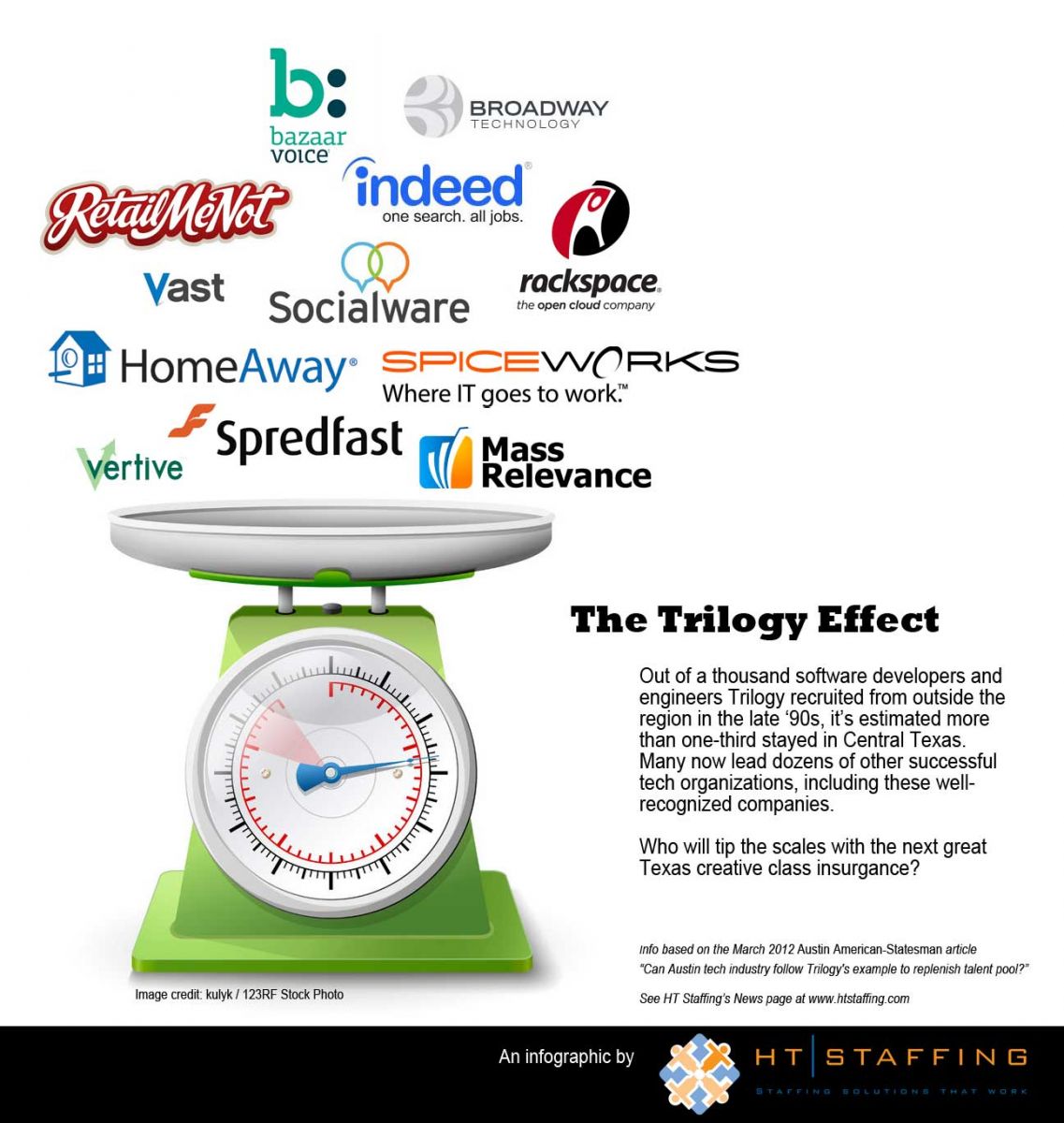If you’re in charge of technical recruiting in Texas you’ve already noticed that demand for technical talent has reached a critical point. The Greater Austin Chamber of Commerce says half of the top 10 posted jobs now are in a technical field; but there aren’t enough qualified people to fill the 7,600 IT-related jobs in the city. When Dice.com referred to Austin’s current tech staffing boom, they theorized that Austin tech companies “need employees more than employees need them.” Ouch. What will it take for the flood gates to open once more? How will Texas attract more software developers, software engineers and other hungry, passionate “coders” to meet demand?
Let’s harken back to Austin, circa 1998; otherwise known as the Trilogy era. According to the Austin American-Statesman, Trilogy at one point spent up to $3 million a month hiring and training tech recruits. In 1998 alone, the Statesman reports, “the company said it hired 262 graduates, including 24 from Stanford, 21 from Harvard, 16 from Princeton, 33 from Carnegie Mellon and 14 from MIT.”
Many of those creative class professionals – an estimated 400 individuals – stayed in Austin after Trilogy downsized in 2001. They now offer leadership to some of the top tech companies in the nation from right here in Central Texas; companies like Home Away, Indeed.com, Mass Relevance, Retail-Me-Not, Inc., and others.
For a more complete vision of how many roads within Austin’s tech community still lead to Trilogy, take a look at this shareable infographic below:

“What Trilogy did for Austin years ago was that it attracted tech talent who has helped sustain the talent demand for 15 years. These engineers are now in executive leadership positions. We need another steady influx of young, brilliant developers again—those with 2-10 years of experience,” says Jay Long, managing director, HT Staffing Search Division. “There are very few companies today like Trilogy investing millions monthly to recruit the best. But, honestly, I don’t believe they need to. There are amazing companies in Texas with great vision and exciting recruitment stories.”
Certainly location shouldn’t be an obstacle. Forbes recently announced its Top 10 U.S. Regions to Watch in 2014, with Texas cities dominating the list. Austin and San Antonio took the top two spots and Houston and Dallas made the top 10 as well. According to Long, the Lone Star State’s biggest competition can be found West — namely San Francisco, Seattle and Portland.
“Almost every day I am asked by clients and prospective clients, ‘Where should we have our development or engineering teams? How does Austin compare to Portland? How does Dallas stack up against Seattle? And do any of these areas even come close to offering me the talent pool that Silicon Valley does?’” Long says. “I believe the true challenge for companies recruiting technical talent is in understanding who they are (as a company) first, then recruiting great talent that aligns well with that vision or cause should be the goal.”
To do this, Long advises companies to evaluate their technical recruiting efforts. Are they approaching recruitment from an event-driven perspective or a process-driven perspective? Depending on a company’s needs, the approach could have a huge impact on success. Event-driven recruiting is often reactionary, or an on-demand recruitment effort. This approach often includes working with a technical recruiter (or several) on an as-needed basis as openings become available within the company. Once the positions are filled, the recruiting process ends until the next openings arise.
Process-driven recruiting is something very different. This approach is ongoing and based on consistent messaging to a targeted audience of candidates. With a proper road map in place and defined cultural themes identified, companies can achieve a consistent ‘A-player’ candidate flow in key hiring areas. This is known as a dedicated search effort, yielding the most consistent and targeted flow of quality candidates. In turn, it allows companies the ability to ‘top grade’ in these focused areas of recruitment.
“There are a lot of companies that talk about recruiting great talent but very few have a process in place or allocate the actual needed resources to accomplish their goals,” Long says. “Yahoo and Google spent hundreds of millions on Acqui-hires last year. That should be a signal for how competitive the market for great technical talent has become.”
What do you think: Are we reaching a recruiting tipping point? How will we fill the demand? We’d love to hear your thoughts.
Image credit: denispc / 123RF Stock Photo



